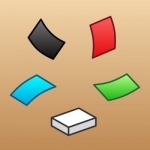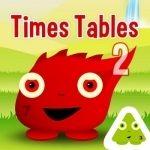
SpeakEasy German ~ Offline Phrasebook and Flashcards with Native Speaker Voice and Phonetics
Travel and Education
App
With over 900 spoken and phonetically written words and expressions, this phrasebook is designed to...

Flight Alert : Impossible Landings Flight Simulator by Fun Games For Free
Games and Entertainment
App
Feel like a HERO! face dangerous situations, land safely and save everyone! + Immersive scenarios:...

Solitaire City Classic
Games and Entertainment
App
No ads or In-App purchases! Play Klondike solitaire, the world's most popular solitaire/patience...

Toca Life: Vacation
Education and Entertainment
App
Make every day a vacation adventure! Feel the excitement of going through the airport to catch your...

Logic Master 1 - Mind Twist
Games and Entertainment
App
Looking for a game that is brilliant, creative and strange at the same time? Now you can become a...

GoSkyWatch Planetarium - Astronomy Night Sky Guide
Navigation, Reference and Education
App
Easily and quickly identify and locate stars, planets, comets, constellations, galaxies and more by...

NAVIS Luxury Yachts Magazine
Magazines & Newspapers and Lifestyle
App
*** A unique Superyacht Design Magazine with award winning photography at the highest possible...

Decked Builder
Games and Entertainment
App
Decked Builder is the premium deck building app for Magic the Gathering -- providing a sleek user...

Squeebles Times Tables 2
Education and Games
App
Perfect for 5 to 11 year olds, Squeebles Times Tables 2 allows them to practise their times tables...

Mending the Rift Box Set
Book
King's Conquest The only way for Prince Rin to save his kingdom is to marry a king and bear a...
M_M Fantasy Romance